New Year, Fitter You! Here are the top 3 workouts for the New Year
 Photo: Active Health
Photo: Active Health
Looking back at the past year, do you regret not exercising as much as you would have liked to? Did your commitments take up too much time that you felt completely drained by the end of each day to clock in a workout? Or did you feel unmotivated or clueless when exercising by yourself?
These are common barriers to making exercise a part of your life but fret not, you are not alone. There are many others who think and feel the same way, and it is not too late to turn the tide.
If you have decided or are still deciding that 2024 would see a healthier and happier you, regular exercise would be an excellent recommendation. Exercise does not need to cost much nor take up a lot of time. We have heard of its desirable outcomes for your body, mind and soul, and it can even improve your social life. Here are the top three workout routines recommended by the American College of Sports Medicine (ACSM), and there is bound to be one suitable for you.
1. High-Intensity Interval Training (HIIT)
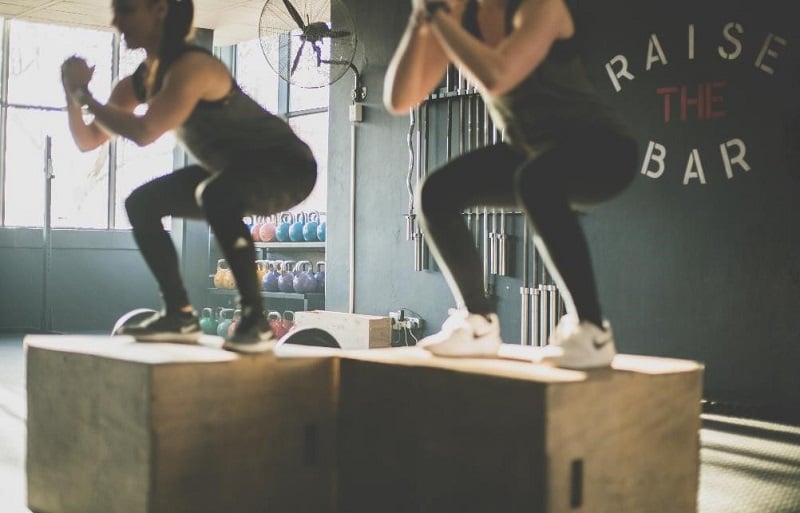 Photo: Active Health
Photo: Active Health
This workout involves bouts of high-intensity exercise followed by short periods of rest or active recovery. Exercise periods range anywhere from five seconds to eight minutes, and are carried out at 80% to 95% estimated maximal heart rate (HR). Rest periods may last as long as exercise periods, and are done at 40 % to 50% estimated maximal HR. The cycle of alternating work and rest periods continues, amounting to a total of 20 to 60 minutes.
It is ideal to use a heart rate monitor device to keep track of heart rates during HIIT, for health safety reasons. Otherwise subjective indicators like the talk test is good enough, i.e. high-intensity exercise would feel like having difficulty holding a conversation.
HIIT can be customised for individuals of different fitness levels and those with conditions like diabetes and obesity. This makes it applicable to almost anyone. It can be done in varying modes like cycling, swimming, running, bodyweight (callisthenics), free weights and in group classes.
Because of the vigorous nature of HIIT, the calories burnt is greater than traditional workouts. As such HIIT takes up less time, making it easy for the busy individual to clock in a short workout and still reap the same benefits as a longer moderate-intensity workout. It is no wonder HIIT is such a popular choice of exercise in recent times!
Individuals who do regular HIIT workouts generally have good stamina. It is effective for weight and fat loss, controlling blood glucose levels, lowering blood pressure and cholesterol levels. More recently, it has been found to support brain function by improving motor function, memory, learning and attention.
2. Training with Free Weights
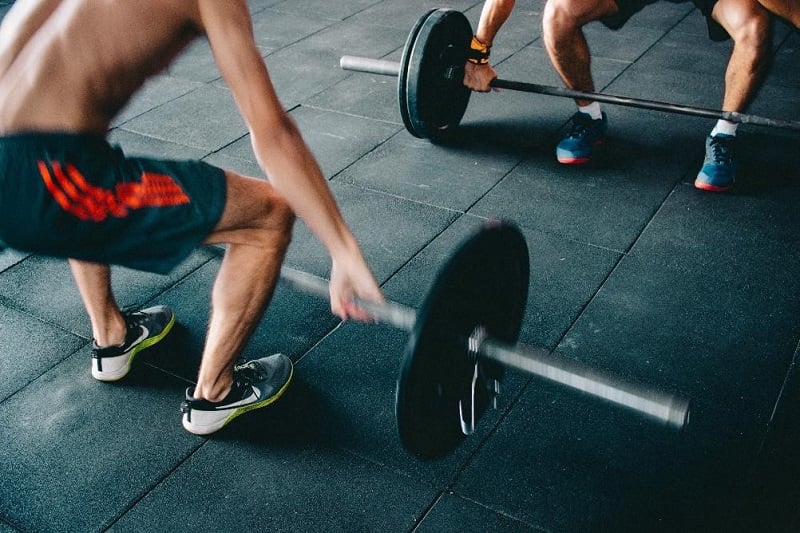 Photo: Active Health
Photo: Active Health
This type of resistance training uses barbells, dumbbells, kettlebells and medicine balls. Being termed free weight, they should not restrict movement and require coordination. Most importantly, they must be carried out with proper supervision and progression.
Individuals who engage in such regular resistance training, ideally two to three times a week, can expect to see improvements in their strength, power and aerobic fitness. Free weight training enhances bone, muscle and connective tissue growth and durability, which is essential for everyone. Both the upper and lower body should be targeted when doing so. Other benefits include blood glucose and hormonal regulation; and better brain-muscle communication.
If you are just starting out and your goal is to build muscle strength and size (hypertrophy), aim for two to three sets of eight to 12 repetitions for each exercise, with at least one minute of rest in between sets. Start with one day a week of strength training for the first month before gradually increasing to two to three days, recommended Mr Munir, Active Health Coach.
Dumbbell strength workout recommended by our Active Health Coach
a) Squats targeting legs 2 sets of 10 repetitions
Stand with your feet hip-width apart and hold the dumbbells by your side. Lower your body by bending at your knees while keeping your chest up. A tip when doing this would be to imagine yourself sitting on a chair. Once your thighs are parallel to the floor, push off through your heels to straighten your knees and hips back to the starting position.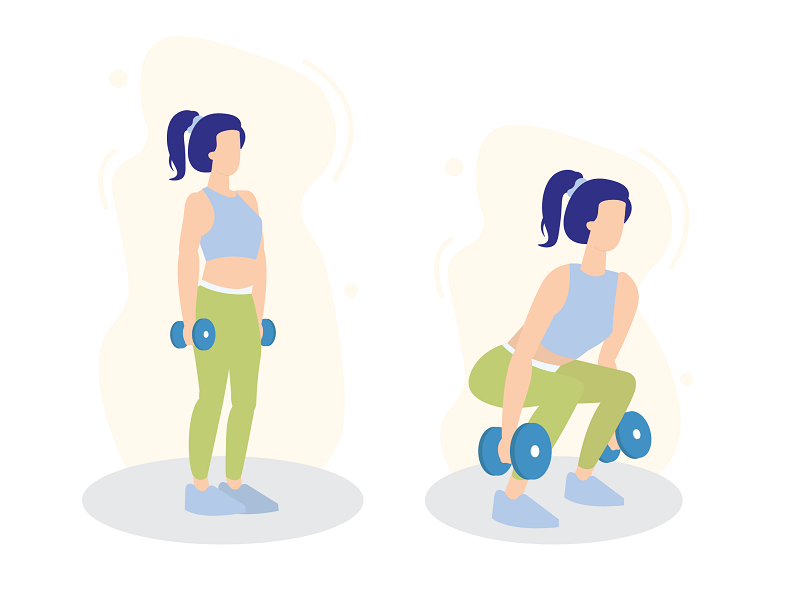
Image: Active Health
b) Bent-over rows targeting back and arms 2 sets of 10 repetitions
Start in a standing position with the dumbbells by your side. Bend your knees and lean forward until your upper body is roughly parallel to the floor. Pull the dumbbells towards your body by driving the elbows. Squeeze your shoulder blades at the top of the movement and slowly return the weights back to the starting position.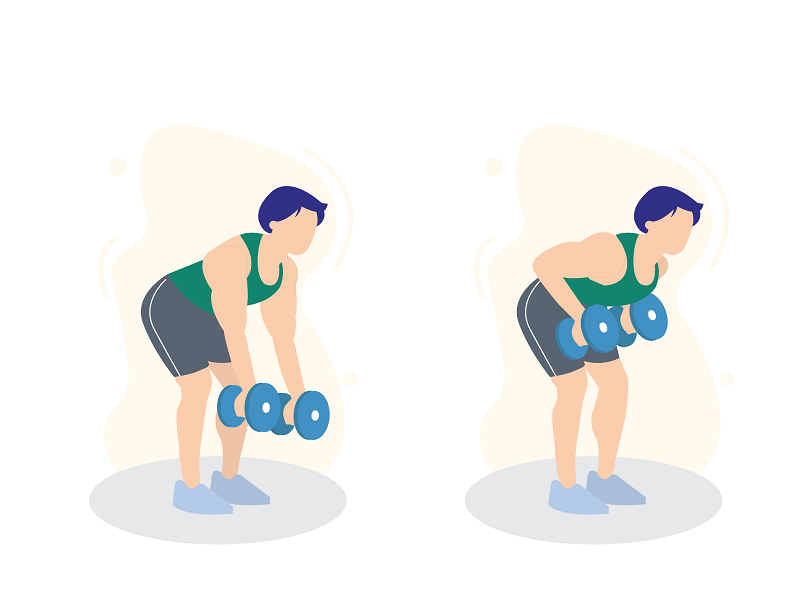
Image: Active Health
c) Lunges targeting legs 2 sets of 10 repetitions each leg
Stand with your feet hip-width apart and hold the dumbbells by your side. While maintaining an upright posture, take a step forward with one foot and bend your knees until the rear knee almost touches the floor. Both your front and rear knees should be at a 90-degree angle. Push yourself back to the starting position with the front leg and repeat with the other leg.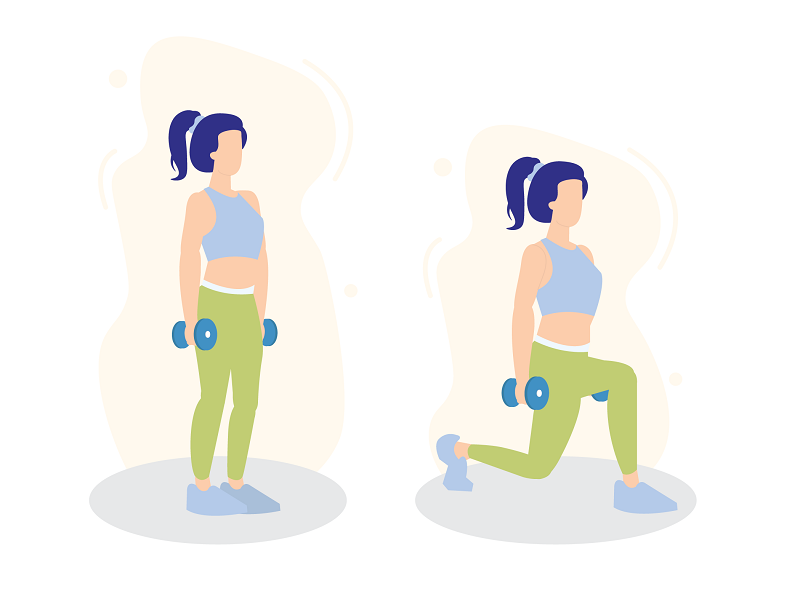
Image: Active Health
d) Shoulder press targeting shoulders and arms 2 sets of 10 repetitions
Stand with an upright posture and keep your feet hip-width apart. Hold the dumbbells and raise your upper arms to shoulder height. Keep your palm facing forward and elbows out and bent at a 90-degree angle. Extend your elbows and press the weights up above your head. Lower the weights to the starting position in a slow and controlled manner.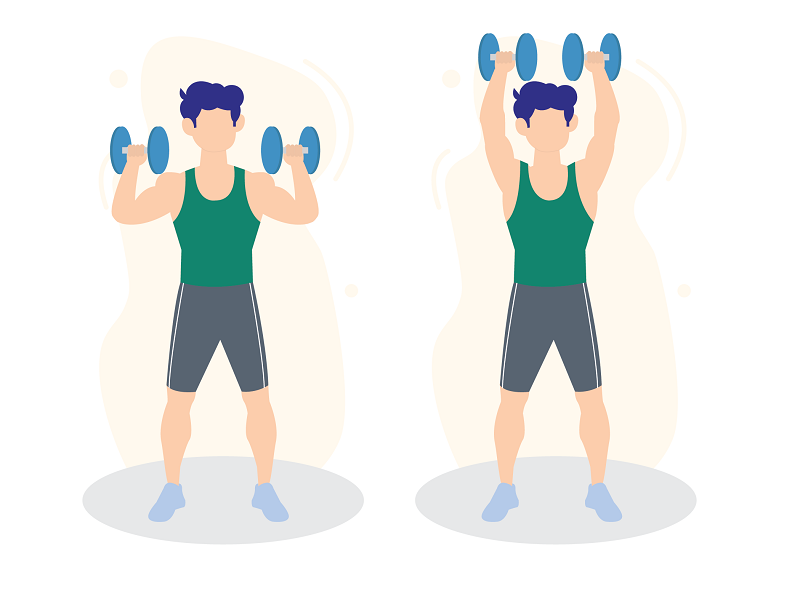
Image: Active Health
Good posture is crucial when handling and using free weights. This should be taught and reinforced by your fitness instructor, before progressing any weight. Safety is a crucial factor, hence weights must be fastened securely to avoid incidents where a weight falls on a body part. As training progresses, the weight used gets heavier, therefore it is recommended to have a spotter to offer safety assistance.
3. Group Training
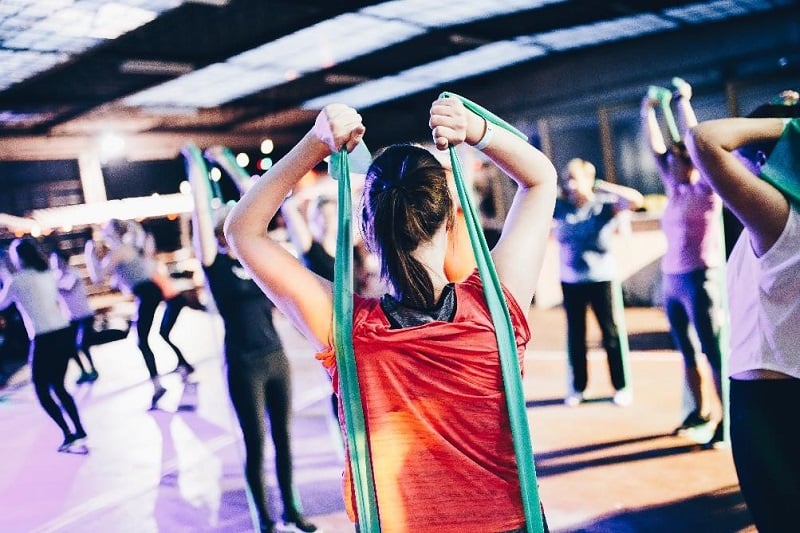 Photo: Active Health
Photo: Active Health
As the title suggests, this type of training occurs in a group class led by an experienced certified instructor. Group class exercises vary widely. There are choreographed dance classes like Zumba, hip-hop, pole and aerial dance. Indoor classes include pilates, yoga, barre, spinning, aerobics and kickboxing. While open-air or outdoor classes feature Tai Chi, boot camp, circuit training and cross fit. The list is non-exhaustive and there is always something different to try.
Exercising in a group setting can prove to be fun, sociable and highly motivational for many. Being part of a group invokes a sense of accountability, helping individuals stick to a consistent exercise schedule. In addition, a Japanese study done in 2018 concluded that regular group training can be effective in preventing depression, especially in the older population and favouring males.
Some useful tips when enrolling in group training are safety, variety and recovery. If you have any pre-existing medical condition or injury, inform the class instructor and have your medications with you. Next, varying the types of group exercises can help prevent overuse injuries. It also lets you achieve a more well-balanced exercise routine and cover more fitness ground such as improving your stamina, strength, flexibility and balance. Finally, being in a group class can be fun and exciting but do not neglect your body's need for recovery between classes. This means spacing out your classes so that you have time to recover, especially if your body is not used to it.
We certainly hope that this article has triggered some curiosity or motivation in you to find out more or even try some of these exercise routines mentioned. For more tips on achieving an active and healthy lifestyle, you may consult our Active Health Coaches at Active Health Labs located island-wide. May 2024 see a healthier and happier you!





![ActiveSG Academies and Clubs Logo (Solid Colour)[8647]](https://www.activesgcircle.gov.sg/hs-fs/hubfs/ActiveSG%20Circle%202023Theme/images/ActiveSG%20Academies%20and%20Clubs%20Logo%20(Solid%20Colour)%5B8647%5D.png?width=150&height=65&name=ActiveSG%20Academies%20and%20Clubs%20Logo%20(Solid%20Colour)%5B8647%5D.png)



-01.png?width=200&height=141&name=Team%20Singapore%20Logo%20(Red)-01.png)







.jpg?width=162&height=60&name=JPMCC%202025%20-%20Active%20SG%20(1920%20X%20700).jpg)
.png?width=162&height=60&name=Website%20Events%20Banner%20(1).png)



.jpg?width=250&height=250&name=JPMCC%202025%20-%20Active%20SG%20(400px%20X%20400px).jpg)
.png?width=250&height=250&name=COE%20and%20Safe%20Sport%20Workshop%20(400%20x%20400%20px).png)
.png?width=250&height=250&name=CCE%2024%20April%20Coaching%20as%20a%20way%20of%20Life%20From%20(400%20x%20400%20px).png)

